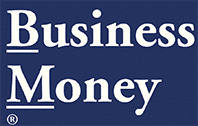Sterling starts the year with ups and downs
A weekly currency market update from Charles Purdy, director of Smart Currency Exchange.
Sterling starts the year with ups and downs
Friday highlighted how quickly exchange rates can move. A positive start to the day saw sterling rise to its highest level against the euro in over six years. However, a slowdown in UK manufacturing growth below the forecast level saw sterling lose value across the board, dropping to a 16-month low against the US dollar and losing over a cent against the euro.
Investors hoping for a sterling recovery will look to a number of key data releases from the UK this week. Purchasing Managers’ Index data from the construction and services industries will provide early-week interest, whilst manufacturing production is forecast to pick up strongly compared to the previous month.
The Bank of England’s latest interest rate decision is likely to remain at 0.5%, and greater attention will be paid to the release of minutes from this meeting later in the month.
With a raft of important releases also set to come from both the Eurozone and the US, it looks to be a busy start to 2015.
A faltering start to the year for the euro
The Euro had a poor start to 2015, moving to six-year lows against sterling on Friday. The fresh lows of Friday were due to continued uncertainty in the Eurozone. With the Greek election at the end of January, this could bring in an anti-Eurozone government, which will be forced to negotiate a new debt package as the country continues to deal with amount of debt on the shoulders of the Greek economy. The euro quickly recovered throughout the day, however, moving a cent back in the single currency’s favour. This gain was due to the European Central Bank’s well-received meeting regarding the quantitative easing program, aimed at kick-starting the Eurozone economy.
For this week, there is a raft of Eurozone data releases. Today see the release of inflation data for Germany and on Wednesday we have the release for the whole of the Eurozone. The data is expected to show significant falls from the previous month due to lower energy and food costs and the main hope is that inflations doesn’t turn negative (i.e. become deflation). We also have a raft of Purchasing Manage Indices and employment data for the Eurozone released which aren’t expected to make pretty reading.
US dollar enjoys a strong start to the year
The US dollar had a largely positive day to start trading in 2015, enjoying strong gains against the majority of its partners. This came as manufacturing figures from the country continued the positive sentiment from 2014, with speculation over interest rate rises maintaining its pressure on the markets. Despite the fact that the Purchasing Managers Index (PMI) from the sector was lower than both last month and its predicted figure, the US dollar soared to its best levels in 16-months against sterling and the best rates for four-and-a-half years against the euro.
This week is a slow start for US data, with the first main piece not due until tomorrow. This will be in the shape of the non-manufacturing PMI, which could be supported by data on factory orders. Wednesday starts the usual start-of-month labour data, with the independent non-farm employment change. The evening then brings the latest meeting minutes from the Federal Reserve, with investors again keen to see any clues on interest rate increases and their timing.
Thursday remains focussed on the labour sector for the unemployment claims, before Friday sees the release of two ever-important figures. These will be the official non-farm employment change figure, which often gives was to activity in the markets; and the overall unemployment rate. With these key data releases, the markets will be watching closely to see if the dollar can continue its ascent, given the labour market’s key ties to interest rate rises.
Swedish employment growing at a fast pace
The beginning of the year is looking rosy for the Swedish krone, after December saw unexpected manufacturing expansion. An index based on feedback from purchasing managers jumped to 55.4 for December, the largest increase since April from 52.7. Any reading above 50 indicates manufacturing expansion. Swedbank said the index “indicates solid industrial growth”.
The Indian rupee recovers slightly
The Indian rupee, started to recover from three week loses on Friday, as it gained almost half a percent against the dollar. The Indian currency sat at 63.2950 per dollar at the end of last week.

